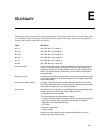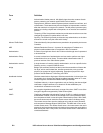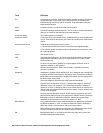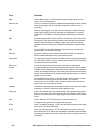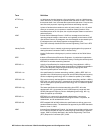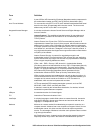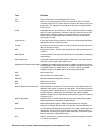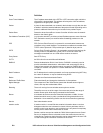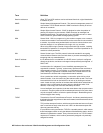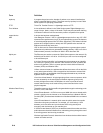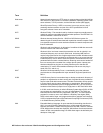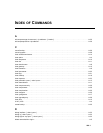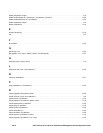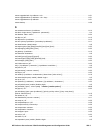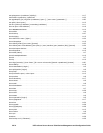Term Definition
Session redirectors Client TCP and UDP sessions can be redirected from their original destination
IP address or port.
SNMP Simple Network Management Protocol - The network management protocol of
most modern TCP/IP-based networks. SNMP monitors the activity of various
devices on a network.
SOAP Simple Object Access Protocol - SOAP is designed to solve the problem of
passing live objects over the network. SOAP structures its messages into
headers and payloads. The payload can be any valid XML structure. In other
words, SOAP is a general XML message passing system.
SSH Secure SHell - SSH is a program to log into another computer over a network,
to execute commands in a remote machine, and to move files from one machine
to another. It provides strong authentication and secure communications over
insecure channels. It is a replacement for rlogin, rsh, rcp, and rdist.
When using SSH's slogin (instead of rlogin) the entire login session, including
transmission of password, is encrypted; therefore it is almost impossible for an
outsider to collect passwords.
SSL Secure Socket Layer: The SSL protocol is the web standard for encrypting
communications between users and web sites, to prevents eavesdropping and
tampering with any transmitted data.
Static IP address An IP address that is not obtained via a DHCP server, but that is configured
directly on the device, and does not change unless specifically reconfigured. cf.
DHCP, NAT
Subnet A subnet (short for —subnetwork“) is an identifiably separate part of an
organization's network. Typically, a subnet may represent all the machines at
one geographic location, in one building, or on the same local area network
(LAN). Having an organization's network divided into subnets allows it to be
connected to the Internet with a single shared network address.
Subnet mask Once a packet has arrived at a gateway or connection point with its unique
network number, it can be routed using the subnet number as well. The router
knows which bits to look at (and which not to look at) by looking at a subnet
mask. A mask is simply a screen of numbers that indicates which subnet bits are
relevant. Using a mask saves the router having to handle the entire 32 bit
address; it can simply look at the bits selected by the mask.
Switch A more intelligent (and expensive) hub that routes data to the computer meant
to receive it. A regular (passive) hub broadcasts packets to all of its ports where
only the computer meant to receive the packet accepts it. Broadcasting has a
lower throughput than routing.
TCP/IP Transmission Control Protocol/Internet Protocol - An industry-standard protocol
that determines the way packets of data are formatted, transmitted and received
between networks.
TCP provides transport functions, which ensures that the total amount of bytes
sent is received correctly at the other end. UDP is an alternate transport that
does not guarantee delivery.
IP provides the routing mechanism. TCP/IP is a routable protocol, which means
that all messages contain not only the address of the destination station, but the
address of a destination network. Every client and server in a TCP/IP network
requires an IP address, which is either permanently assigned or dynamically
assigned at startup.
HP ProCurve Secure Access 700wl Series Management and Configuration Guide E-9



